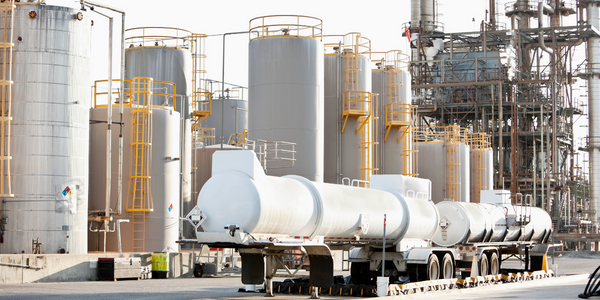下载PDF
ELI LILLY ADOPTS MICROMEDIA’S ALERT NOTIFICATION SYSTEM

技术
- 功能应用 - 远程监控系统
- 网络与连接 - 蜂窝
- 传感器 - 空气污染传感器
- 传感器 - 化学传感器
- 传感器 - 气体传感器
- 传感器 - 压力传感器
- 传感器 - 温度传感器
适用行业
- 药品
适用功能
- 商业运营
用例
- 监管合规监控
挑战
药品生产必须遵守一套严格的强制规则,并且必须遵守这些标准。由于 WIN 911 的战略合作伙伴 Micromedia 的努力,礼来能够采用与现有工作流程和紧急硬件和协议顺利集成的警报通知基础架构。这些原始能源使工业过程发挥作用:电力、WIN-911 软件 | 4020 南工业大道,套房 120 | Austin, TX 78744 美国工业蒸汽、冰水、不同质量的空气混合物。制冷塔、锅炉和废水由 ALERT 监控。 Eli Lilly 确定了 15000 个潜在变量,但限制迫使他们将变量列表削减到 300 个。这允许涵盖所有主要警报,包括压力、排放、排放的废水量、温度、二氧化碳含量、氧气和硫含量,和水的pH值。
客户
礼来公司
关于客户
-
解决方案
ALERT 监控和集中用于自动化应用程序的数据和警报,例如 SCADA 系统。与 WIN-911 一样,ALERT 使用适当的媒体自动通知相关人员潜在的危险。
收集的数据
Alarms For Automated Applications, Carbon Dioxide Emissions, Pressure, Temperature, Wastewater
运营影响
数量效益
相关案例.

Case Study
Case Study: Pfizer
Pfizer’s high-performance computing software and systems for worldwide research and development support large-scale data analysis, research projects, clinical analytics, and modeling. Pfizer’s computing services are used across the spectrum of research and development efforts, from the deep biological understanding of disease to the design of safe, efficacious therapeutic agents.

Case Study
Fusion Middleware Integration on Cloud for Pharma Major
Customer wanted a real-time, seamless, cloud based integration between the existing on premise and cloud based application using SOA technology on Oracle Fusion Middleware Platform, a Contingent Worker Solution to collect, track, manage and report information for on-boarding, maintenance and off-boarding of contingent workers using a streamlined and Integrated business process, and streamlining of integration to the back-end systems and multiple SaaS applications.

Case Study
Process Control System Support
In many automated production facilities, changes are made to SIMATIC PCS 7 projects on a daily basis, with individual processes often optimised by multiple workers due to shift changes. Documentation is key here, as this keeps workers informed about why a change was made. Furthermore, SIMATIC PCS 7 installations are generally used in locations where documentation is required for audits and certification. The ability to track changes between two software projects is not only an invaluable aid during shift changes, but also when searching for errors or optimising a PCS 7 installation. Every change made to the system is labour-intensive and time-consuming. Moreover, there is also the risk that errors may occur. If a change is saved in the project, then the old version is lost unless a backup copy was created in advance. If no backup was created, it will no longer be possible to return to the previous state if and when programming errors occur. Each backup denotes a version used by the SIMATIC PCS 7 system to operate an installation. To correctly interpret a version, information is required on WHO changed WHAT, WHERE, WHEN and WHY: - Who created the version/who is responsible for the version? - Who released the version? - What was changed in the version i.e. in which block or module of the SIMATIC PCS 7 installation were the changes made? - When was the version created? Is this the latest version or is there a more recent version? - Why were the changes made to the version? If they are part of a regular maintenance cycle, then is the aim to fix an error or to improve production processes? - Is this particular version also the version currently being used in production? The fact that SIMATIC PCS 7 projects use extremely large quantities of data complicates the situation even further, and it can take a long time to load and save information as a result. Without a sustainable strategy for operating a SIMATIC PCS 7 installation, searching for the right software version can become extremely time-consuming and the installation may run inefficiently as a result.

Case Study
Drug Maker Takes the Right Prescription
China Pharm decided to build a cloud-based platform to support the requirements of IT planning for the next five to ten years which includes a dynamic and scalable mail resource pool platform. The platform needed to have the following functions: all nodes support redundancy, ensuring service continuity and good user experience, simple and easy-to-use user interfaces for end users and administrators and good compatibility and supports smooth capacity expansion.







